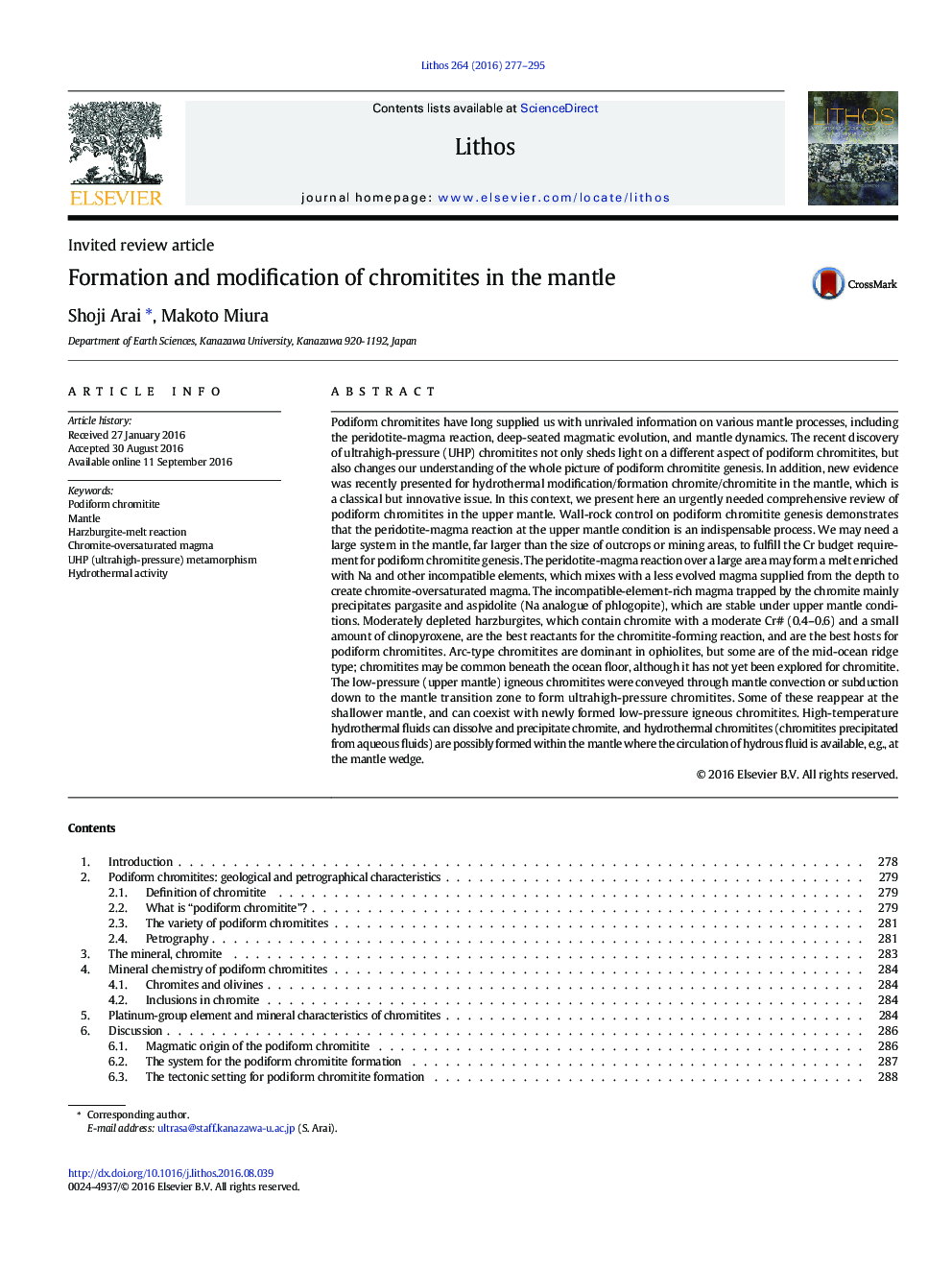| کد مقاله | کد نشریه | سال انتشار | مقاله انگلیسی | نسخه تمام متن |
|---|---|---|---|---|
| 6440224 | 1638640 | 2016 | 19 صفحه PDF | دانلود رایگان |
عنوان انگلیسی مقاله ISI
Formation and modification of chromitites in the mantle
ترجمه فارسی عنوان
تشکیل و اصلاح کرومیتیت ها در گوشته
دانلود مقاله + سفارش ترجمه
دانلود مقاله ISI انگلیسی
رایگان برای ایرانیان
کلمات کلیدی
موضوعات مرتبط
مهندسی و علوم پایه
علوم زمین و سیارات
ژئوشیمی و پترولوژی
چکیده انگلیسی
Podiform chromitites have long supplied us with unrivaled information on various mantle processes, including the peridotite-magma reaction, deep-seated magmatic evolution, and mantle dynamics. The recent discovery of ultrahigh-pressure (UHP) chromitites not only sheds light on a different aspect of podiform chromitites, but also changes our understanding of the whole picture of podiform chromitite genesis. In addition, new evidence was recently presented for hydrothermal modification/formation chromite/chromitite in the mantle, which is a classical but innovative issue. In this context, we present here an urgently needed comprehensive review of podiform chromitites in the upper mantle. Wall-rock control on podiform chromitite genesis demonstrates that the peridotite-magma reaction at the upper mantle condition is an indispensable process. We may need a large system in the mantle, far larger than the size of outcrops or mining areas, to fulfill the Cr budget requirement for podiform chromitite genesis. The peridotite-magma reaction over a large area may form a melt enriched with Na and other incompatible elements, which mixes with a less evolved magma supplied from the depth to create chromite-oversaturated magma. The incompatible-element-rich magma trapped by the chromite mainly precipitates pargasite and aspidolite (Na analogue of phlogopite), which are stable under upper mantle conditions. Moderately depleted harzburgites, which contain chromite with a moderate Cr# (0.4-0.6) and a small amount of clinopyroxene, are the best reactants for the chromitite-forming reaction, and are the best hosts for podiform chromitites. Arc-type chromitites are dominant in ophiolites, but some are of the mid-ocean ridge type; chromitites may be common beneath the ocean floor, although it has not yet been explored for chromitite. The low-pressure (upper mantle) igneous chromitites were conveyed through mantle convection or subduction down to the mantle transition zone to form ultrahigh-pressure chromitites. Some of these reappear at the shallower mantle, and can coexist with newly formed low-pressure igneous chromitites. High-temperature hydrothermal fluids can dissolve and precipitate chromite, and hydrothermal chromitites (chromitites precipitated from aqueous fluids) are possibly formed within the mantle where the circulation of hydrous fluid is available, e.g., at the mantle wedge.
ناشر
Database: Elsevier - ScienceDirect (ساینس دایرکت)
Journal: Lithos - Volume 264, 1 November 2016, Pages 277-295
Journal: Lithos - Volume 264, 1 November 2016, Pages 277-295
نویسندگان
Shoji Arai, Makoto Miura,
